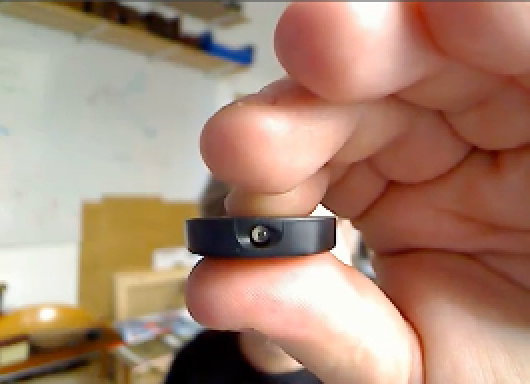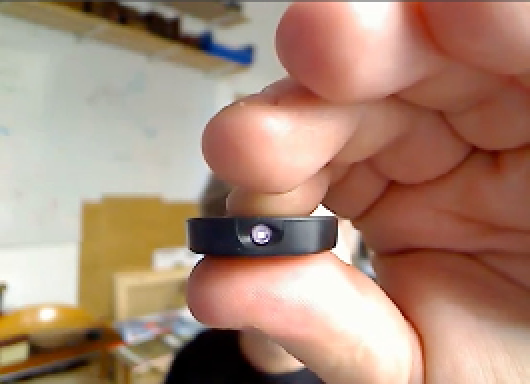Hardware Reference
In-Depth Information
receiver picks up all IR light but filters out anything that's
not vibrating at the carrier frequency. Then it filters out the
carrier frequency, so all that's left is the data signal. This
method allows you to transmit data using infrared light
without getting interference from other IR light sources—
unless they happen to be oscillating at the same frequency
as your carrier wave.
usually done at a low data rate, typically between 500 and
2,000 bits per second. It's not great for high-bandwidth
data transmission, but if you're only sending the values
of a few pushbuttons on a remote, it's acceptable. Unlike
the serial protocols you've seen so far in this topic, IR
protocols do not all use an 8-bit data format. For example,
Sony's Control-S protocol has three formats: 12 bit, 15 bit,
and 20 bit. Philips' RC5 format, common to many remotes,
uses a 14-bit format.
The directional nature of infrared makes it more limited,
but cheaper than radio, and requires less power. As radios
get cheaper, more power-efficient, and more robust, it's
less common to see an IR port on a computer. However,
it's still both cost-effective and power-efficient for line-of-
sight remote control applications.
If you have to send or receive remote control signals,
you'll save a lot of time by looking for a specialty IR
modulator chip to do the job, rather than trying to recreate
the protocol yourself. Fortunately, there are many good
sites on the Web that explain the various protocols.
Reynolds Electronics (
www.rentron.com
) has many helpful
tutorials, and sells a number of useful IR modulators
and demodulators. EPanorama has a number of useful
links describing many of the more common IR protocols
at
www.epanorama.net/links/irremote.html
. There are
also a number of libraries written for Arduino to help you
send and receive IR signals for different protocols. Many
Data protocols for the IR remote controls of most home
electronics vary from manufacturer to manufacturer. To
decode them, you need to know both the carrier frequency
and the message structure. Most commercial IR remote
control devices operate using a carrier wave between 38
and 40 kHz. The carrier wave's frequency limits the rate at
which you can send data on that wave, so IR transmission is
Making Infrared Visible
There are two tools that are really helpful when you're working with IR transmitters and receivers: a camera and an oscilloscope.
Even though you can't see infrared light, cameras can. If you're not sure whether your IR LED is working, one quick way to check
is to point the LED at a camera and look at the resulting image. If it's working, you'll see the LED light up. Figure 6-3 shows the
IR LED in a home remote control, viewed through a webcam attached to a personal computer. You can even see this in the LCD
viewfinder of a digital camera. If you try this with your IR LED, you may need to turn the lights down or close the curtains to see
this effect. Some webcams have a built-in IR filter, so it's good to first check with an IR device that you know works, like a remote
control, before you use it to detect whether your project is working.
Figure 6-3.
Having a camera at hand is useful when troubleshooting IR projects.









